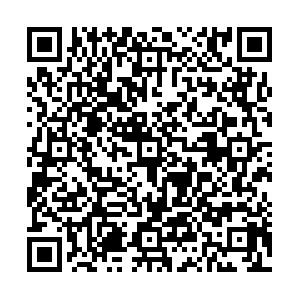Effectiveness of the mental health education courses for freshmen in Jiangsu colleges
-
摘要:
目的 了解江苏省高校新生心理健康状况,考察心理健康课程对提升大一新生心理健康水平的效果,为提高大一新生心理健康水平提供参考。 方法 2019年3—4月选取江苏某高校3 358名大一新生开展心理健康课程,每周1次(每次2个学时),连续8周,共16个学时(8个学时课堂讲授,8个学时体验式教学)。采用中国大学生心理健康筛查量表,在心理健康课程的前、中、后3个时间段进行3次问卷调查。 结果 课程前,共筛查出严重心理问题者186人,占总人数的5.54%;一般心理问题310人,占总人数的9.23%;潜在心理困扰579人,占总人数的17.23%;无心理困扰2 283人,占总人数的67.99%。在课程的前、中、后3个时间段,心理问题呈现下降趋势,时间主效应有统计学意义(P值均0.01)。实施心理健康课程后,严重心理问题的检出率(3.84%,129/3 358)低于课程前(5.54%,186/3 358)(χ2=10.82,P<0.01)。3个时间段,新生心理问题的发展轨迹分为2个类型,分别是“先升后降型”(26%)和“缓慢下降型”(74%)。 方法 心理健康课程对提高大一新生心理健康水平有积极作用,高校应重视心理健康课程建设,全面保障课程质量。 Abstract:Objective To understand the overall mental health status of freshmen in colleges and universities in Jiangsu Province, to investigate the effectiveness of mental health courses in improving the mental health of freshmen, so as to provide a reference for improving the mental health of freshmen. Methods A total of 3 358 freshmen from a university in Jiangsu were selected from March to April 2019, mental health courses were held once(2 class hours each time) a week for 8 consecutive weeks, 16 class hours in total(8 class hours of classroom teaching, and 8 class hours of experiential teaching). All the participants were used the Chinese College Students Mental Health Scale to conduct a questionnaire survey followed up before, during and after the implementation of mental health courses. Results A total of 186 students with serious psychological problems were screened before the course, accounting for 5.54% of the total number, 310 students with general psychological problems, accounting for 9.23% of the total number, and 579 students with potential psychological distress, accounting for the total number 17.23% of the total number of people, 2 283 students without psychological distress, accounting for 67.99% of the total number. In the early, middle and late periods of the course, psychological problems showed a downward trend, and the main effect of time was significant(all P<0.01). After the implementation of the mental health course, the detection rate of serious psychological problems (3.84%, 129/3 358) was significantly lower than before the course(5.54%, 186/3 358)(χ2=10.82, P<0.01). In the early, middle and late periods of the course, the development trajectory of freshmen's psychological problems was divided into two types, namely "first ascending and then descending" (26%) and "slowly descending"(74%). Conclusion The mental health curriculum shows a positive effect on improving the mental health of freshmen. Colleges and universities should pay attention to the construction of mental health curriculum to fully guarantee the quality of the curriculum. -
Key words:
- Mental health /
- Health education /
- Analysis of variance /
- Students
-
表 1 不同测试时间大一新生心理健康状况得分比较(x±s, n=3 358)
Table 1. Results of repeated measurement ANOVA on mental health status of freshmen(x±s, n=3 358)
时间 幻觉妄想症状 自杀意图 焦虑 抑郁 偏执 自卑 敏感 社交恐惧 躯体化 依赖 敌对冲击 T1 4.87±1.39 4.51±1.19 6.20±2.15 7.95±2.53 5.97±1.96 7.83±2.71 7.35±2.46 6.21±2.25 5.01±1.65 6.40±2.19 5.34±1.64 T2 4.71±1.35 4.42±1.31 5.85±2.13 7.68±2.71 5.67±1.97 7.59±2.77 6.63±2.45 5.94±2.25 5.00±1.69 6.14±2.20 5.29±1.70 T3 4.51±1.14 4.38±1.12 5.38±1.91 6.98±2.46 5.21±1.74 6.98±2.49 5.97±2.23 5.48±1.97 4.80±1.49 5.21±1.81 4.97±1.49 F值 86.18 12.96 190.92 185.96 185.47 135.84 429.74 145.49 23.31 278.36 70.73 P值 < 0.01 < 0.01 < 0.01 < 0.01 < 0.01 < 0.01 < 0.01 < 0.01 < 0.01 < 0.01 < 0.01 时间 冲动 强迫 网络成瘾 自伤行为 进食问题 睡眠困扰 学校适应困难 人际关系困扰 学业压力 就业压力 恋爱困扰 T1 6.92±2.28 7.03±2.45 8.92±3.21 4.63±1.19 5.22±1.37 6.54±2.21 6.48±1.89 6.29±2.02 8.93±2.54 8.62±2.81 5.95±1.91 T2 6.31±2.18 6.42±2.40 8.78±3.52 4.62±1.30 5.18±1.41 6.48±2.48 5.95±1.95 6.06±2.05 8.25±2.73 8.55±3.19 5.80±1.93 T3 5.70±1.96 5.80±2.16 8.08±3.28 4.47±1.11 4.98±1.36 6.03±2.28 5.43±1.73 5.50±1.86 7.09±2.64 7.37±3.05 5.37±1.75 F值 386.65 339.92 89.28 21.95 39.11 67.01 327.58 204.57 603.84 262.85 114.89 P值 < 0.01 < 0.01 < 0.01 < 0.01 < 0.01 < 0.01 < 0.01 < 0.01 < 0.01 < 0.01 < 0.01 表 2 潜在类别分析模型适配摘要表
Table 2. Summary adaptation table of potential category analysis model
模型 K Log(L) AIC aBIC Entropy LMR BLRT 类别概率 C=2 12 -17 516.56 35 057.12 35 092.42 0.82 0.00 < 0.01 0.26/0.74 C=3 15 -17 392.65 34 815.30 34 859.43 0.82 0.23 < 0.01 0.13/0.25/0.62 C=4 18 -17 273.82 34 583.64 34 636.59 0.87 0.70 < 0.01 0.25/0.16/0.58/0.01 C=5 21 -17 219.65 34 481.31 34 543.09 0.85 0.08 .01 0.01/0.25/0.15/0.03/0.56 注: K为自由估计的参数数目;Log(L)为Log likelihood检验;AIC为Akaike信息准则;aBIC为调整的BIC;Entropy为熵值;LMR为似然比检验;BLRT为基于Bootstrap的似然比检验;C为潜在类别数量。 -
[1] 桑志芹, 伏干. 家庭环境专业满意度与大一新生心理健康的关系[J]. 心理与行为研究, 2015(13): 278-282. https://www.cnki.com.cn/Article/CJFDTOTAL-CLXW201502020.htmSANG Z Q, FU G. Relations of the family environment, major satisfaction and mental health of the freshmen[J]. Stud Psychol Behav, 2015(13): 278-282. https://www.cnki.com.cn/Article/CJFDTOTAL-CLXW201502020.htm [2] 杨钋, 毛丹. "适应"大学新生发展的关键词: 基于首都高校学生发展调查的实证分析[J]. 中国高教研究, 2013(3): 16-24. https://www.cnki.com.cn/Article/CJFDTOTAL-ZGGJ201303004.htmYANG P, MAO D. Adaption is the key word for college freshmen development: an empirical analysis based on the survey of capital university students development[J]. Chin Higher Educ Res, 2013(3): 16-24. https://www.cnki.com.cn/Article/CJFDTOTAL-ZGGJ201303004.htm [3] LIU F, ZHOU N, CAO H, et al. Chinese college freshmen's mental health problems and their subsequent help-seeking behaviors: acohort design(2005-2011)[J]. PLoS One, 2017, 12(10): e0185531 doi: 10.1371/journal.pone.0185531 [4] 冯光. 论以幸福教育为基本指向的积极心理健康教育途径建设[J]. 理论导刊, 2016(5): 90-93. doi: 10.3969/j.issn.1002-7408.2016.05.023FENG G. On the construction of positive mental health education approaches based on happiness education[J]. J Soc Theory Guide, 2016(5): 90-93. doi: 10.3969/j.issn.1002-7408.2016.05.023 [5] 梁舜薇, 赵静波, 赵久波. 心理健康课程对大学生情绪及寻求心理帮助态度的影响[J]. 中国健康教育, 2017, 33(8): 745-748. https://www.cnki.com.cn/Article/CJFDTOTAL-ZGJK201708017.htmLIANG S W, ZHAO J B, ZHAO J B. Effect of mental-health curriculum on the emotion and attitudes toward seeking professional help of college students[J]. Chin J Health Educ, 2017, 33(8): 745-748. https://www.cnki.com.cn/Article/CJFDTOTAL-ZGJK201708017.htm [6] 方晓义, 袁晓娇, 胡伟, 等. 中国大学生心理健康筛查量表的编制[J]. 心理与行为研究, 2018, 16(1): 111-118. doi: 10.3969/j.issn.1672-0628.2018.01.015FANG X Y, YUAN X J, HU W, et al. The development of college students mental health screening scale[J]. Stud Psychol Behav, 2018, 16(1): 111-118. doi: 10.3969/j.issn.1672-0628.2018.01.015 [7] 教育部. 教育部办公厅关于印发《普通高等学校学生心理健康教育课程教学基本要求》的通知[A/OL]. [2011-05-28]. http://www.moe.gov.cn/srcsite/A12/moe_1407/s3020/201105/t20110528_120774.html.Ministry of Education of the People's Republic of China. The notice of the General Office of the Ministry of Education on the issuance of the basic requirements for the teaching of mental health education courses for students in general institutions of higher learning[A/OL]. [2011-05-28]. http://www.moe.gov.cn/srcsite/A12/moe_1407/s3020/201105/t20110528_120774.html. [8] 吴九君. 系统思维视域下高校心理育人的实践反思与优化路径[J]. 黑龙江高教研究, 2021, 39(1): 144-149. doi: 10.3969/j.issn.1003-2614.2021.01.025WU J J. Practice reflection and optimizing path of college psychological education from perspective of system thinking[J]. Heilongjiang Res Higher Educ, 2021, 39(1): 144-149. doi: 10.3969/j.issn.1003-2614.2021.01.025 [9] 赵山, 李焰. 构建大学生心理健康主渠道教育中国化模式[J]. 中国高等教育, 2017(19): 61-62. https://www.cnki.com.cn/Article/CJFDTOTAL-ZGDJ201719032.htmZHAO S, LI Y. Constructing the Chinese-oriented model of college students' mental health main channel education[J]. Chin Higher Educ, 2017(19): 61-62. https://www.cnki.com.cn/Article/CJFDTOTAL-ZGDJ201719032.htm -

 点击查看大图
点击查看大图
计量
- 文章访问数: 959
- HTML全文浏览量: 405
- PDF下载量: 75
- 被引次数: 0





 下载:
下载: